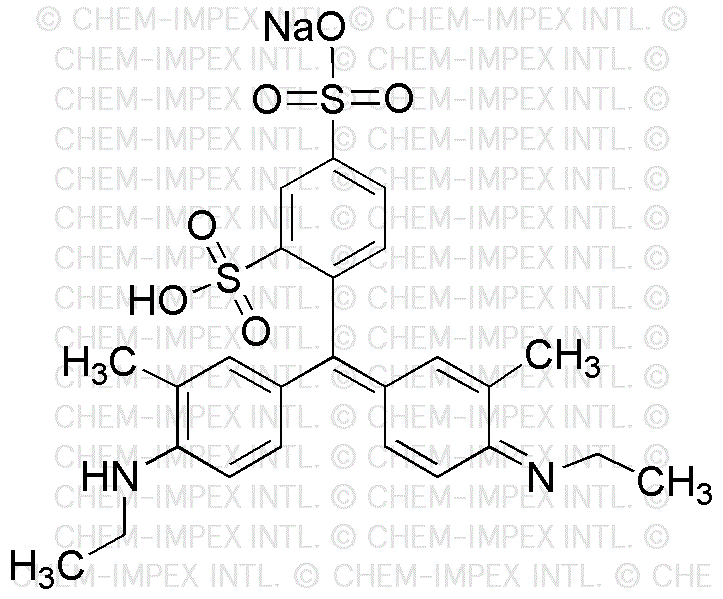Xylene cyanole FF is widely utilized in research focused on:
- Biochemical Assays: This compound is commonly used as a tracking dye in gel electrophoresis, helping researchers visualize DNA and RNA during separation processes.
- Histology and Pathology: It serves as a stain in tissue samples, allowing for better differentiation of cellular structures under a microscope, which is crucial for accurate diagnosis.
- Environmental Testing: Xylene cyanole FF is employed in various assays to detect pollutants in water samples, aiding in environmental monitoring and compliance with safety regulations.
- Pharmaceutical Development: It is used in the formulation of certain drugs, enhancing the stability and solubility of active ingredients, which can improve therapeutic efficacy.
- Food Industry: The compound is utilized as a colorant in food products, providing visual appeal while being safe for consumption, thus meeting regulatory standards.
General Information
Properties
Safety and Regulations
Applications
Xylene cyanole FF is widely utilized in research focused on:
- Biochemical Assays: This compound is commonly used as a tracking dye in gel electrophoresis, helping researchers visualize DNA and RNA during separation processes.
- Histology and Pathology: It serves as a stain in tissue samples, allowing for better differentiation of cellular structures under a microscope, which is crucial for accurate diagnosis.
- Environmental Testing: Xylene cyanole FF is employed in various assays to detect pollutants in water samples, aiding in environmental monitoring and compliance with safety regulations.
- Pharmaceutical Development: It is used in the formulation of certain drugs, enhancing the stability and solubility of active ingredients, which can improve therapeutic efficacy.
- Food Industry: The compound is utilized as a colorant in food products, providing visual appeal while being safe for consumption, thus meeting regulatory standards.
Documents
Safety Data Sheets (SDS)
The SDS provides comprehensive safety information on handling, storage, and disposal of the product.
Product Specification (PS)
The PS provides a comprehensive breakdown of the product’s properties, including chemical composition, physical state, purity, and storage requirements. It also details acceptable quality ranges and the product's intended applications.
Certificates of Analysis (COA)
Search for Certificates of Analysis (COA) by entering the products Lot Number. Lot and Batch Numbers can be found on a product’s label following the words ‘Lot’ or ‘Batch’.
*Catalog Number
*Lot Number
Certificates Of Origin (COO)
This COO confirms the country where the product was manufactured, and also details the materials and components used in it and whether it is derived from natural, synthetic, or other specific sources. This certificate may be required for customs, trade, and regulatory compliance.
*Catalog Number
*Lot Number
Safety Data Sheets (SDS)
The SDS provides comprehensive safety information on handling, storage, and disposal of the product.
DownloadProduct Specification (PS)
The PS provides a comprehensive breakdown of the product’s properties, including chemical composition, physical state, purity, and storage requirements. It also details acceptable quality ranges and the product's intended applications.
DownloadCertificates of Analysis (COA)
Search for Certificates of Analysis (COA) by entering the products Lot Number. Lot and Batch Numbers can be found on a product’s label following the words ‘Lot’ or ‘Batch’.
*Catalog Number
*Lot Number
Certificates Of Origin (COO)
This COO confirms the country where the product was manufactured, and also details the materials and components used in it and whether it is derived from natural, synthetic, or other specific sources. This certificate may be required for customs, trade, and regulatory compliance.


